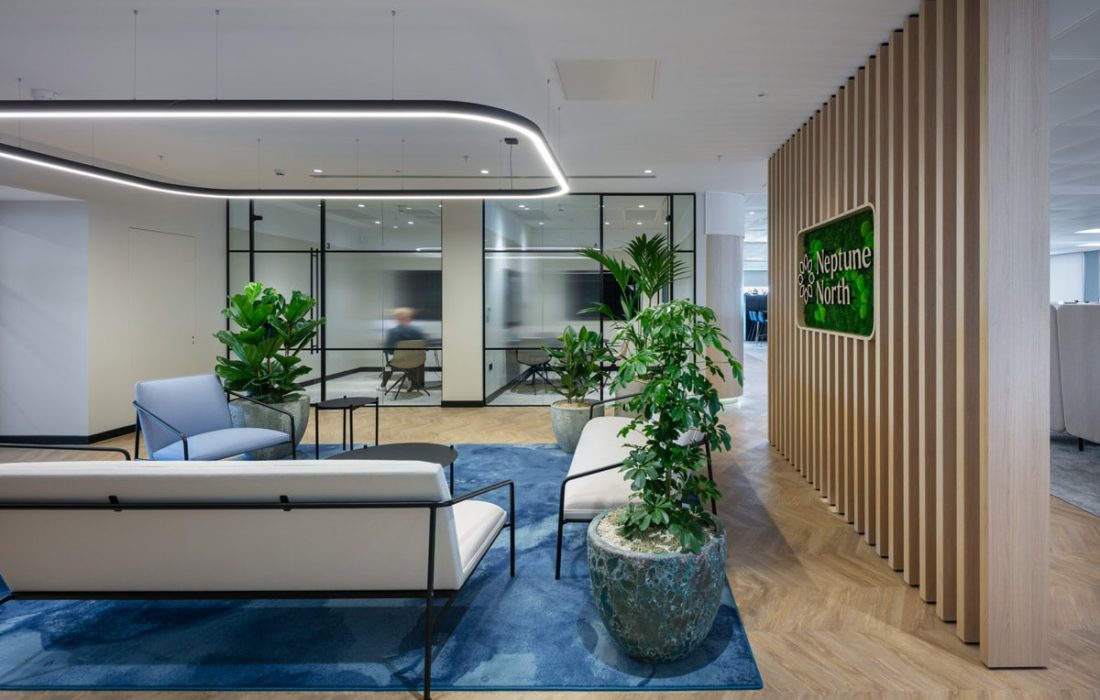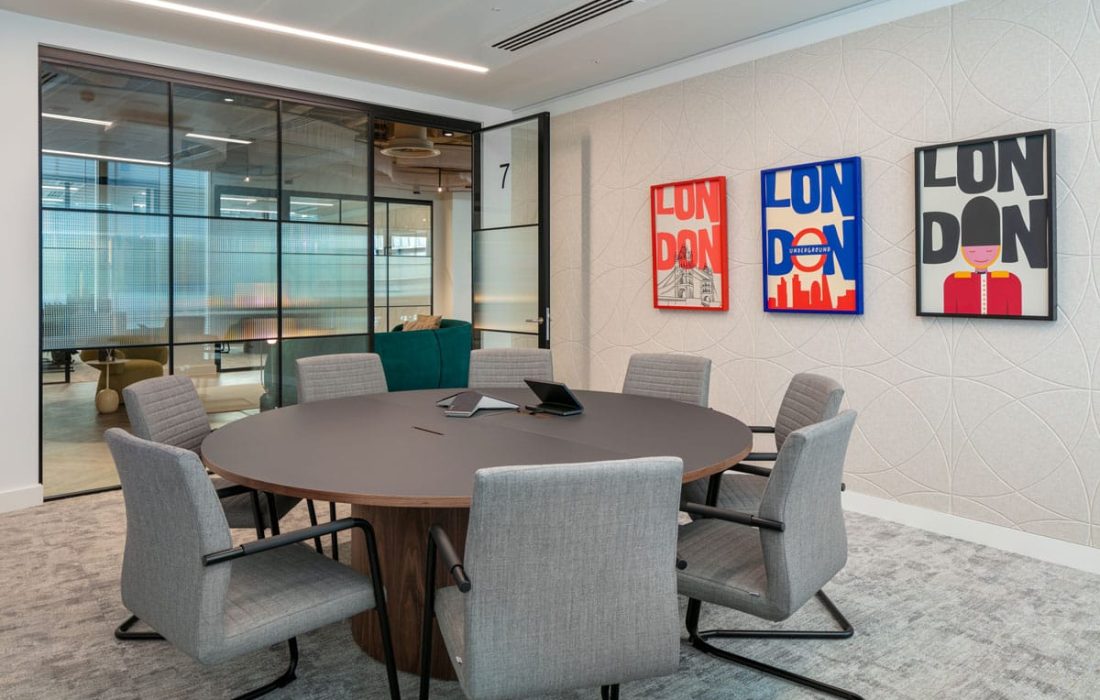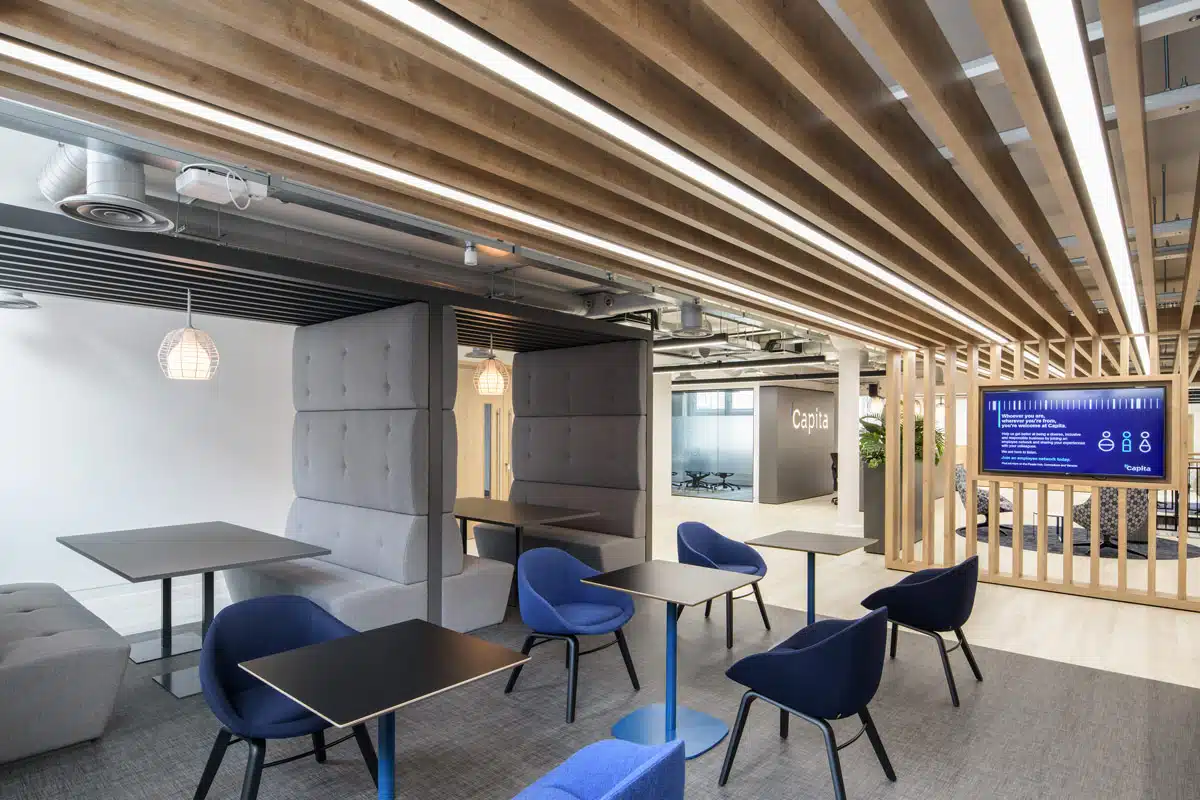Why Personality Matters in Office Design
Every office space is a physical extension of a business. It reflects who you are, how you work, and what you stand for. When clients or new recruits walk through your doors, your environment should speak before you do. A personalised, character-rich space helps create emotional connections, fosters belonging, and sets the tone for company culture.
Designing with personality isn’t just about bold colours or quirky décor. It’s about aligning the space with your identity – whether that’s innovation, heritage, creativity, professionalism, or playfulness. When done right, it reinforces values, encourages the behaviours you want to see, and supports team engagement.
From Corporate Grey to Culture-Led Interiors
Historically, offices leaned towards neutral tones and uniform layouts. These choices were considered safe, but they often came at the cost of creativity and wellbeing. Today, companies are embracing more expressive palettes, varied textures, and bespoke elements that echo their brand’s voice.
Take creative industries, for instance. Many opt for collaborative zones with bold, playful design touches that spark imagination. Legal or financial firms, meanwhile, may favour refined finishes that convey trust and professionalism, but still weave in subtle brand motifs through materials and lighting.
No matter the industry, personalisation is key. It’s not about following trends; it’s about designing for your people and your purpose.
Embedding Brand into the Physical Space
Your logo on a wall is not enough. Strong workplace design integrates branding across the full experience – from the moment someone steps into reception to the materials, scents, and even acoustics of meeting rooms.
Branded environments might feature colour schemes that match your brand identity, textures that reflect your industry, or graphic storytelling walls that showcase your journey. Furniture choices, spatial layout, and lighting design also play critical roles in expressing who you are.
Even small touches – like signature scents, local art, or custom finishes – can contribute to a richer, more memorable space.
Designing for Different Personalities and Work Styles
A one-size-fits-all approach simply doesn’t work. People have different energy levels, work preferences, and personality types. Thoughtful office design should cater to both introverts and extroverts, the analytical and the creative, the independent and the collaborative.
This might mean incorporating a mix of open-plan zones, quiet booths, breakout spaces, and focus rooms. A variety of textures and environments not only support wellbeing but also allow employees to choose the space that suits their task and mood.
By embedding flexibility into design, businesses show that they care about individual needs. In return, this often results in better morale, retention, and productivity.
Sustainability and Storytelling Can Coexist
It’s possible to express personality and remain sustainable. In fact, character-led design often lends itself to repurposing, upcycling, and sourcing unique, local materials. This approach avoids the “off-the-shelf” aesthetic and reduces environmental impact.
Personalised interiors don’t require excess or opulence. Often, restraint and thoughtful storytelling have more impact than extravagant fit-outs. The focus should be on authenticity – crafting a space that is true to your people and values.








